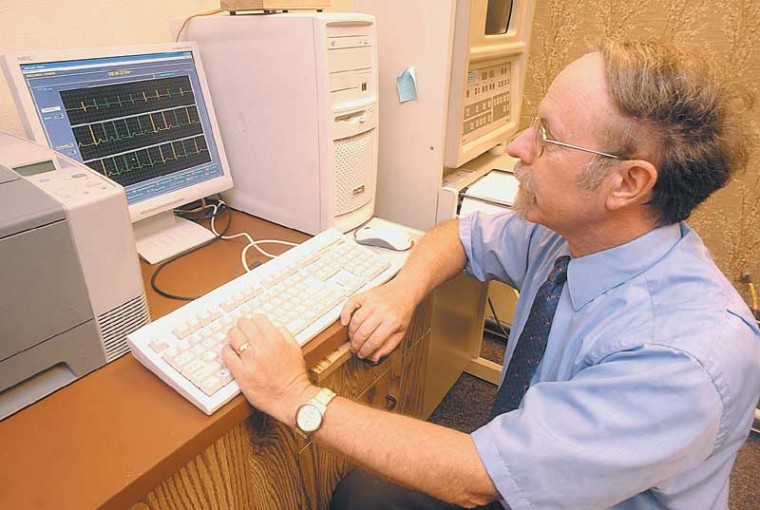Hollister
– A bill that would increase doctors’ Medicare reimbursements in
surrounding counties, while leaving San Benito County’s
reimbursement flat, has some local doctors worried about attracting
physicians to this area.
Hollister – A bill that would increase doctors’ Medicare reimbursements in surrounding counties, while leaving San Benito County’s reimbursement flat, has some local doctors worried about attracting physicians to this area.
While it is popular among many California physicians, San Benito County doctors are worried the bill – which will make the reimbursement higher for doctors in three of the surrounding counties – will make it even more difficult to attract new doctors to the region.
Dr. Martin Bress, a doctor at Hazel Hawkins Hospital, has been outspoken in his criticism of the bill and its effects on the county. Bress said that while he understands the bill would be appreciated by other doctors who have been unfairly reimbursed by Medicare, local doctors are left with the bad end of the deal.
“For a young doctor being recruited to Hollister, if you see all these things you’re going to say, ‘Thanks, but no thanks,'” Bress said. “There’s not a whole lot of incentive to open a practice in Hollister.”
The congressional bill – H.R. 2484 – is designed to improve accuracy in the regional allocation of doctors’ reimbursements from Medicare. Currently, doctors in some larger metropolitan areas – including Santa Clara County – are reimbursed more for their services from Medicare because of higher operating costs. But the regions’ allocations are outdated, according to the proposal.
This bill would make Medicare update the areas defined as having higher costs of providing health care, adding Santa Cruz and Monterey counties to the list. San Benito County, however, would not qualify for a reimbursement increase.
It was introduced by Congressman Sam Farr, D-Carmel, who represents San Benito County along with Santa Cruz and Monterey counties.
San Benito County currently has a strong medical community, but many of its doctors are aging, Bress said, and with increasing housing costs it’s becoming more and more difficult to recruit new ones.
“We have a nice health care system here, but we don’t have a lot of people on the bench,” he said. “We could easily lose our hospital if enough people leave.”
Other doctors have expressed similar concerns about the effect it would have on recruitment efforts. Dr. Ralph Armstrong, president of the San Benito County Medical Society, said the disparities between reimbursements in Hollister and surrounding counties already existed, and this bill would compound the problem.
“We’re going to be surrounded by all those counties that get paid more than we do,” Armstrong said. “It does make recruiting more of an issue.”
A doctor giving a flu shot in San Francisco gets reimbursed around 25 percent more from Medicare for the shot, Bress noted. This is because the costs of operating are much higher in San Francisco.
Doctors in Gilroy, however, also get paid more for the same procedures, and the bill will make it so a doctor in Salinas or Santa Cruz would also get reimbursed more. Physicians’ costs in those surrounding cities are not that much different, both doctors said.
Rochelle Dornatt, Farr’s chief of staff, said she acknowledged the bill does not help San Benito County doctors as much as doctors in the surrounding areas. But she said the criteria for determining qualifications for higher reimbursements are determined by statistics.
Regions qualify based on costs of physicians’ practices – such as overhead and nurses’ pay – as well as physician work and malpractice insurance. Based on these factors, San Benito County does not qualify.
“Our bill is a best-case scenario that we can give them now,” Dornatt said. “We are trying really hard to make sure that the system works the right way for doctors.”
Dornatt added that despite some misconceptions, the bill would not lower any counties’ reimbursements. Some doctors had expressed concern that Medicare reimbursements in San Benito County would decrease while the surrounding counties’ reimbursements increased.
She contended it would actually help San Benito County physicians by ensuring that the regions stay up-to-date in case the county eventually does qualify.
Farr will be in the county Aug. 22 to meet with Hollister’s doctors and will meet with other local citizens later that week.
“At some point, we will have to enact radical changes in the way we deliver health care to the nation. Until we decide that this sort of patchwork quilt of different programs – Medicare, Medicaid, private insurance – is no longer an efficient means of providing health care, this bill is the best I can do,” Dornatt said.










